The Nintendo Switch 2 has been on the market for five months, and out of the handful of major games, Pokémon is set to be one of the biggest.
Z-A also promises a significant shakeup to the core gameplay with real-time combat. It’s an exciting proposition, but the new twist to the classic combat isn’t the huge revitalization of the game that I expected. The hard battles still present similar moments of tension, and since you’re still using the same attacks, battles mostly play out the same as they would in a turn-based game. It’s like writing in another language. It looks different, but says the same thing.
I’m sure some trainers will find it more engaging, and it is refreshing to have something different to play, but I’ve found it just as fun as any other Pokémon game.
The other major shakeup is the game world. Instead of exploring an entire region like in most previous games, this time around, we’re stuck in Lumoise City. The small area isn’t as limiting as it seems, and having everything you need for your adventure around you feels like living in a real city. Where this falls apart is in design and detail. It’s a nice step up over Scarlet and Violet, but Game Freak has yet to make a map feel truly lived-in.
I’ve been able to sink 27 hours into the game over an extremely short review period, and while I haven’t beaten it yet, I’ve had lots of fun, even if the game hasn’t lived up to the lofty expectations I had for it. Perhaps next year, when we finally have a game that’s only available on Switch 2, it will finally take a significant step up.
City life
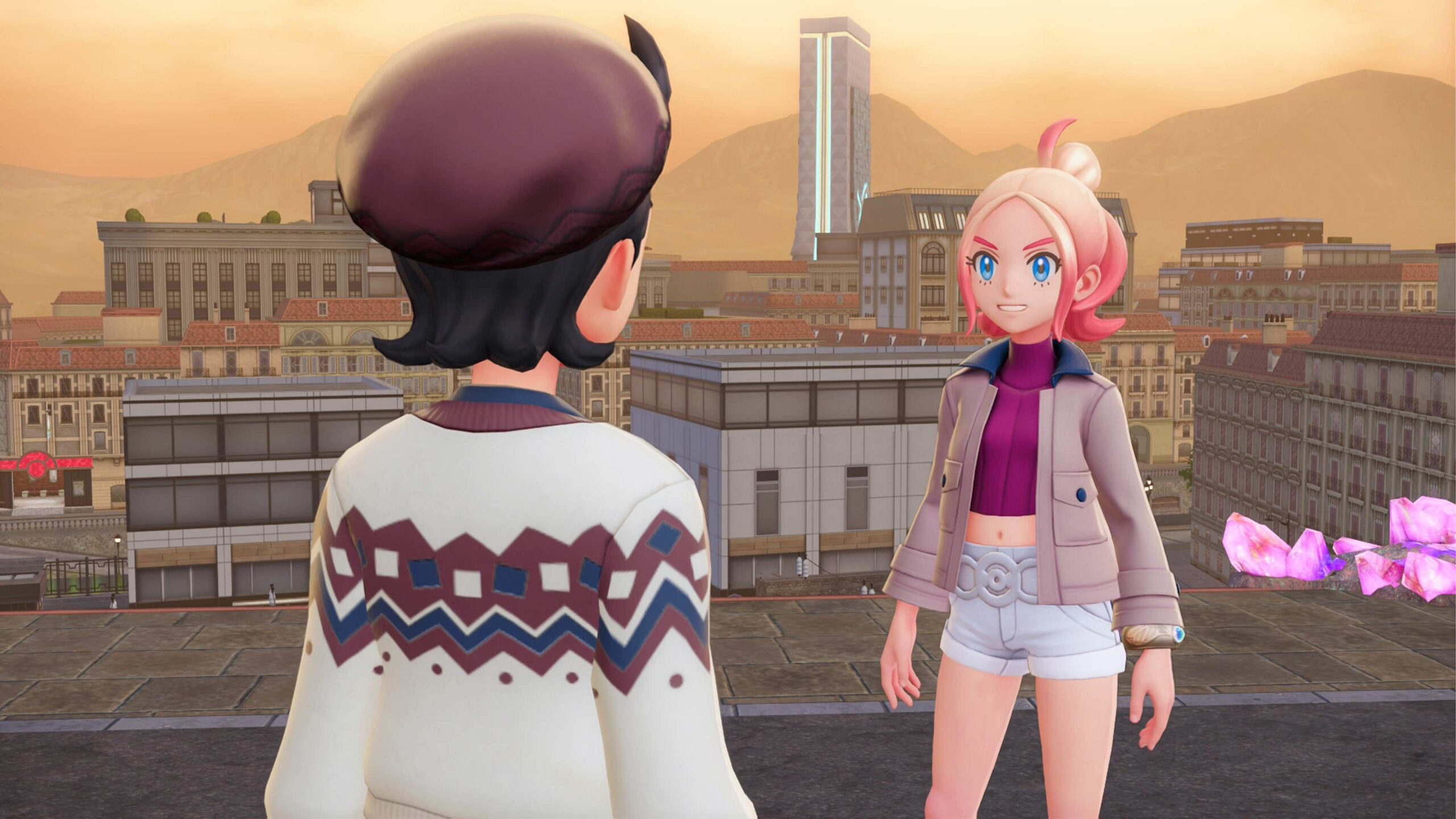
The small map is bound to be the most controversial aspect of this game, but I think its issues stem less from the small footprint and more from its repetitive nature. Some interesting places have standout streets, and various wild areas also have bespoke designs, but most of it looks the same.
The buildings and streets are coloured the same greys and browns. Some roofs are different colours, but you can’t see that from the street, so it doesn’t add to the world. Most of the textures aren’t 3D, so everything is a bit flatter than you’d want. Even when walking around, there are fewer NPCs, and most are standing still. It’s not a bad setting for an adventure, but unfortunately, this version isn’t the bustling Pokémon Metropolis it’s laid out to be.
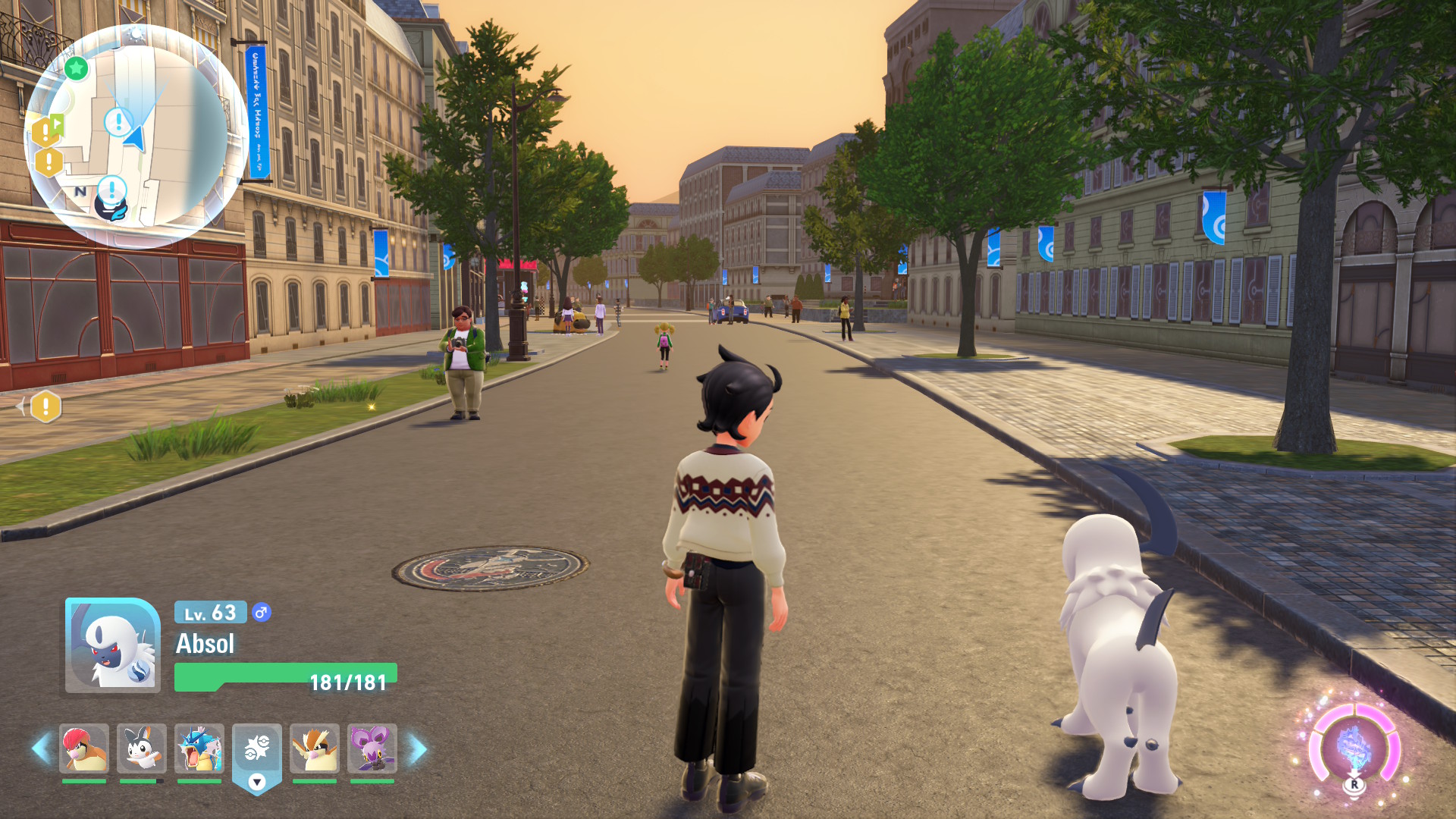
This sets the game at odds with itself. Going in, I had dreams of a world full of Pokémon getting up to hijinks like the short film from 2000, but sadly, it doesn’t reach those highs very often. This is hit home even harder whenever you come across a fleeting moment of strong worldbuilding. For instance, while exploring near the start of the game, I walked across a thin bridge connecting two rooftops, the Pidgeys perched there took off and flew away like real birds.
It was an immersive moment, but after playing most of the game since then, I’ve rarely had anything like that happen again. Much like Pokémon: Legends Arceus, all of the monsters and NPCs feel hand-placed, making it feel more like I’m walking around a diorama. One thing that breaks this early on is a side quest that asks you to find a shiny Mareep in Wild Zone 1. So far, every time I’ve gone back there, I haven’t seen any shiny Pokémon, but the Mareep are in the exact same spot every time. Not the same area. The exact place, as if they’re rooted to the ground. Other areas don’t always feel this constructed, but most do.
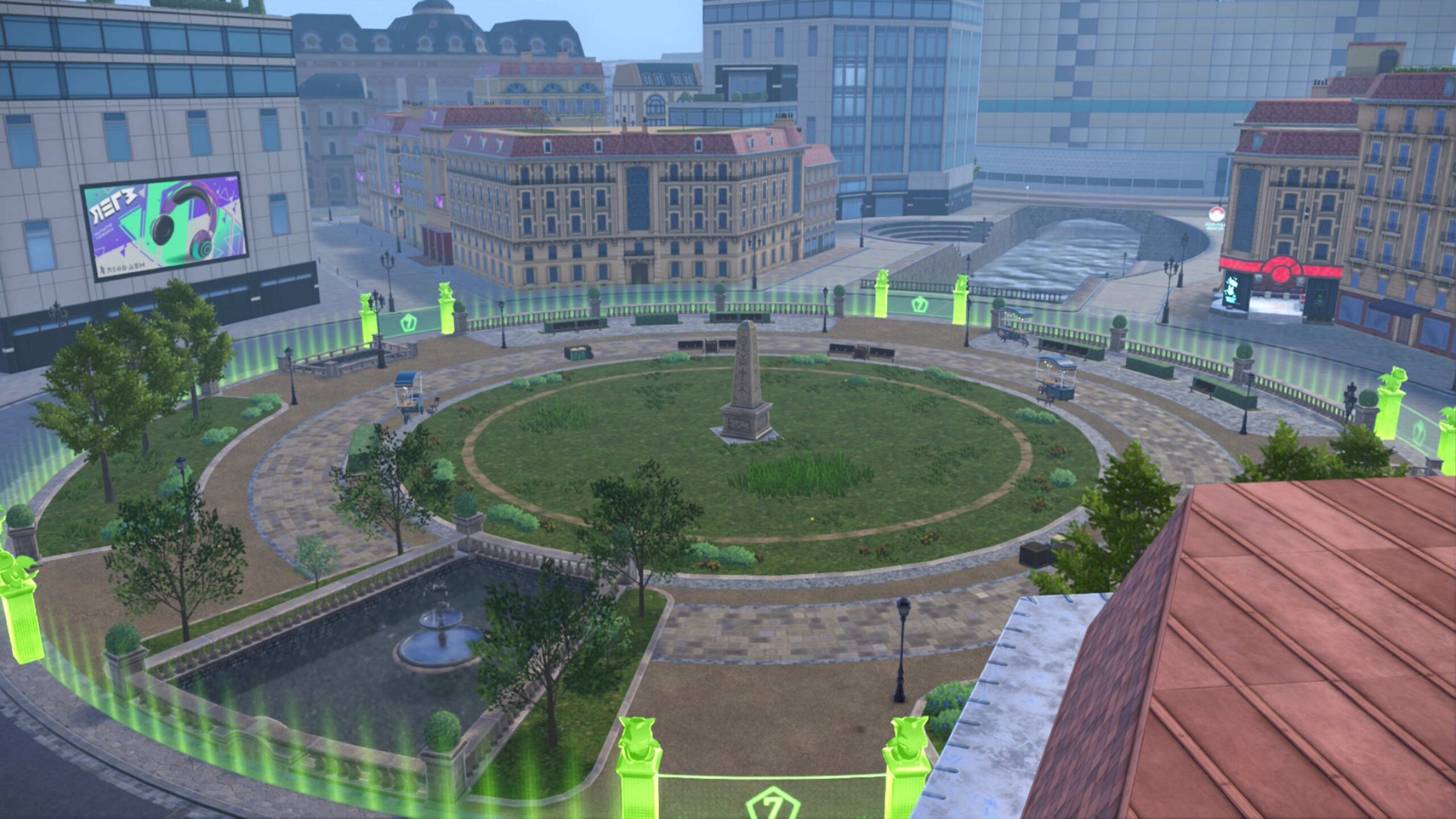
There’s a lot to do in the dense world, but since exploring after a few hours is so dull, I spend way more time fast-travelling than you’d expect in a city this small.
It’s not a terrible video game world, though. There are some interesting platforming puzzles, lots of rooftops to explore and even some fun easter eggs to stumble across the more you explore Lumoise City. Regardless, I kept feeling like there needed to be something more, akin to the underground area in Tears of the Kingdom, but in my time so far, I’ve mostly been disappointed. Hopefully, I’m wrong, and if I am, I’ll update this section if another area opens up before the end of the story.
As with most things Pokémon, I think this issue is mostly about how much time the company had. The world is full of little side missions that range from simple battles to slightly more complex tasks. I’d also be remiss not to mention that whenever I did spot a new Pokémon I hadn’t seen yet on a rooftop or in a wild area, I did crack a bit of a smile. There are also slight nods to the areas of the city being named after colours, but you really need to look for them. The company could have done a lot more to make each slice feel distinct, which would have helped a lot with making the city feel alive.
Keep your head up
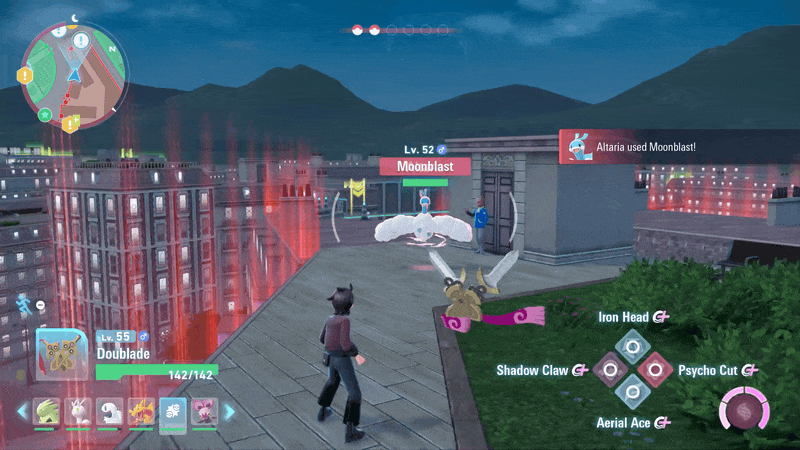
This year, the most significant change to the system is the battling. Turn-based combat is out and has been replaced by real-time fighting. Each move is on a separate cooldown timer, meaning things like Flamethrower might recharge in six seconds, while a more powerful move like Fire Blast might take eight seconds. That’s just the tip of the iceberg, since there are a lot more variables for each attack that the game doesn’t tell you about, but are just as important.
This could be how long it takes to fire off your move, how far/close you need to be to use said move, and how large the area of attack is. For instance, Whirlpool takes five seconds to recharge, but it drops a spinning pool of water at your enemy’s feet that persists for another five seconds for continuing damage.
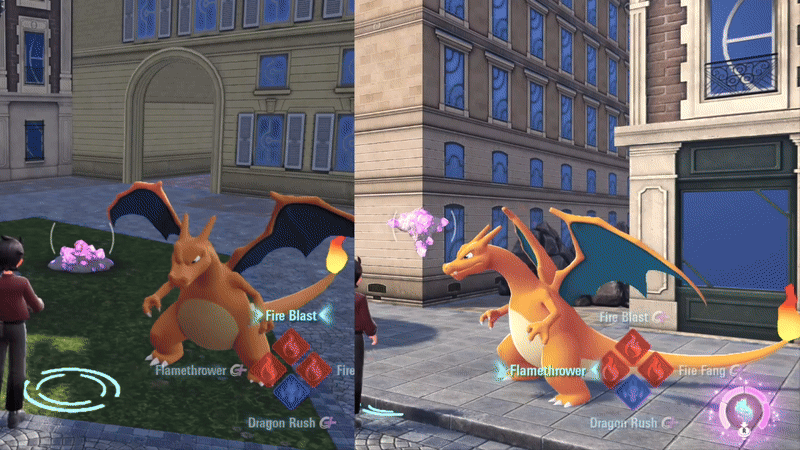
It’s subtle, but Flamethrower starts a bit before Fire Blast and ends more quickly.
Other moves work as you expect, and there are still many status-affecting and shield moves like Protect or Sword Dance to help you gain an advantage in combat. Even dropping in a fresh monster mid-fight isn’t the advantage you’d hope it would be. Like traditional battles, swapping fighters counts as a turn, so in Legends Z-A, you need to wait a beat after swapping Pokémon, which usually results in you taking a hit.
You can also try to avoid attacks by moving around the battlefield. Your character can move around during combat just like you could in Arceus Legends, but this time, whenever you call out an attack, your Pokémon will readjust, and if you time it just right, they’ll effectively dodge enemy attacks. It’s an interesting system, but it’s hard to master. I’ve been wondering my whole playthrough if it would have just been easier to have an actual dodge button for the Pokémon. Instead, there’d a dodge mechanic for the trainer.
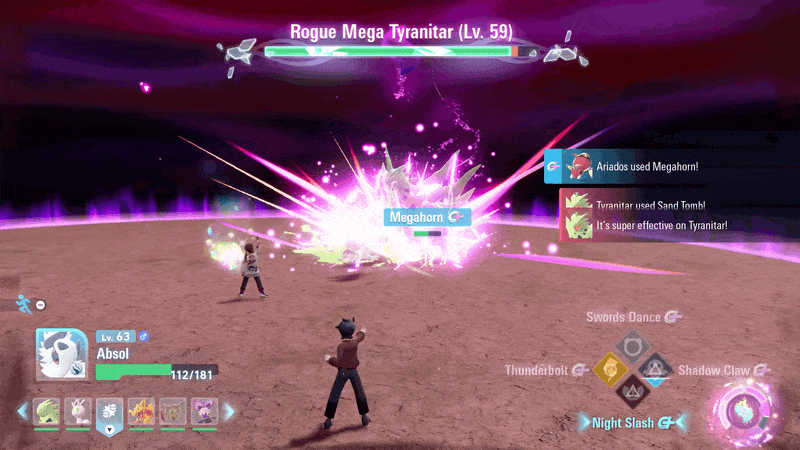
What makes this even more challenging is that sometimes wild monsters will attack the player character, and can even knock you out, forcing you to scurry back to the nearest Pokémon Centre. Trainers have a dodge button to avoid this, but the control scheme to get to it is a little convoluted, so for most of the game, I’ve been sprinting around in the battles instead of dodging.
It’s annoying and convoluted to need to move between the Pokémon battle controls and the human controls mid-fight. I wish Game Freak had left this out. I get that it’s there to help balance things since you can change out your entire team from the in-game menu now, but ultimately, it led me to more moments of frustration than exciting combat opportunities.
It just feels cheap to be winning an important battle with a wild Pokémon (some of these can take around 10 minutes or more) only for it to switch up and knock you out instead. Thankfully, the game allows you to restart these without a penalty, but then you come back into a fight with a fully healed team while the boss monster is worn down. The other option is to redo the whole battle again, but since they take so long, it’s not a super appealing proposition.
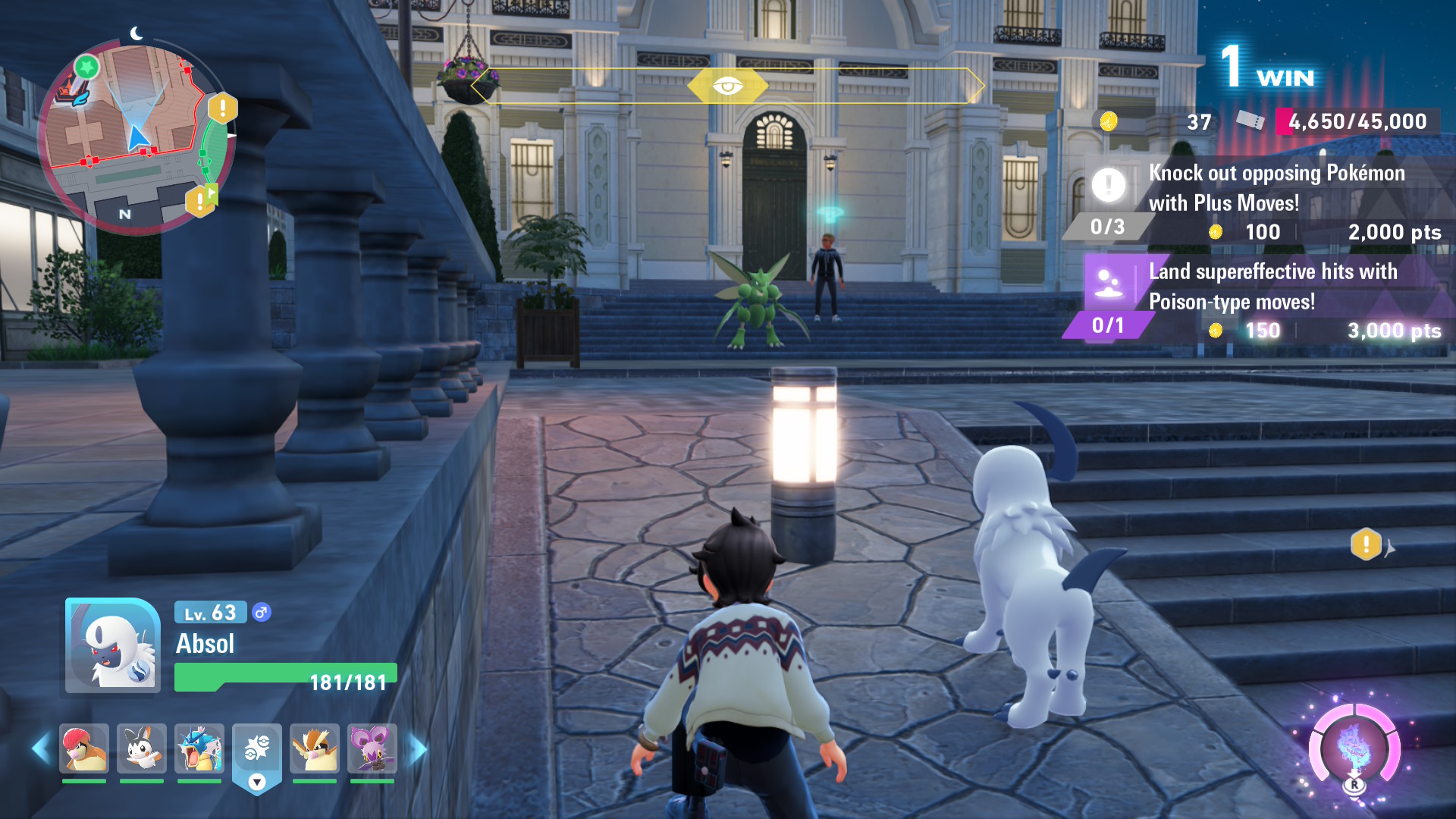
Since I spend all my time in the game working to power up my monsters, it’s aggravating to be taken out by something you have so little control over. It’s not a big deal, but to me, I’m here to battle pocket monsters. It doesn’t feel fair when I’ve got a stacked team of hand-picked fighters, and then randomly, five minutes into the fight, things turn, and then I’m just running around waiting for an opportunity to battle again.
There’s no doubt that these moments add some tension, but I’d rather the tension come from something I can control or reduce as I get better at the game. There are ample clothing outfits to buy in the city, and I’m wondering now if perhaps buying them should increase the player’s health to help avoid being knocked out mid-battle.
Regardless of all these issues, I’m a fan of this combat. It’s a fun split from the primary mechanic that still maintains many of the same rules and balancing. It also fits in really nicely with Pokémon’s rock-paper-scissors typing system. I still like the classic turn-based combat more since I find it more tactical, and I adore the control it gives me over each fight. This new system might be a little more exciting from time to time, but it can also be more annoying all the same.
Somehow, an above-average adventure
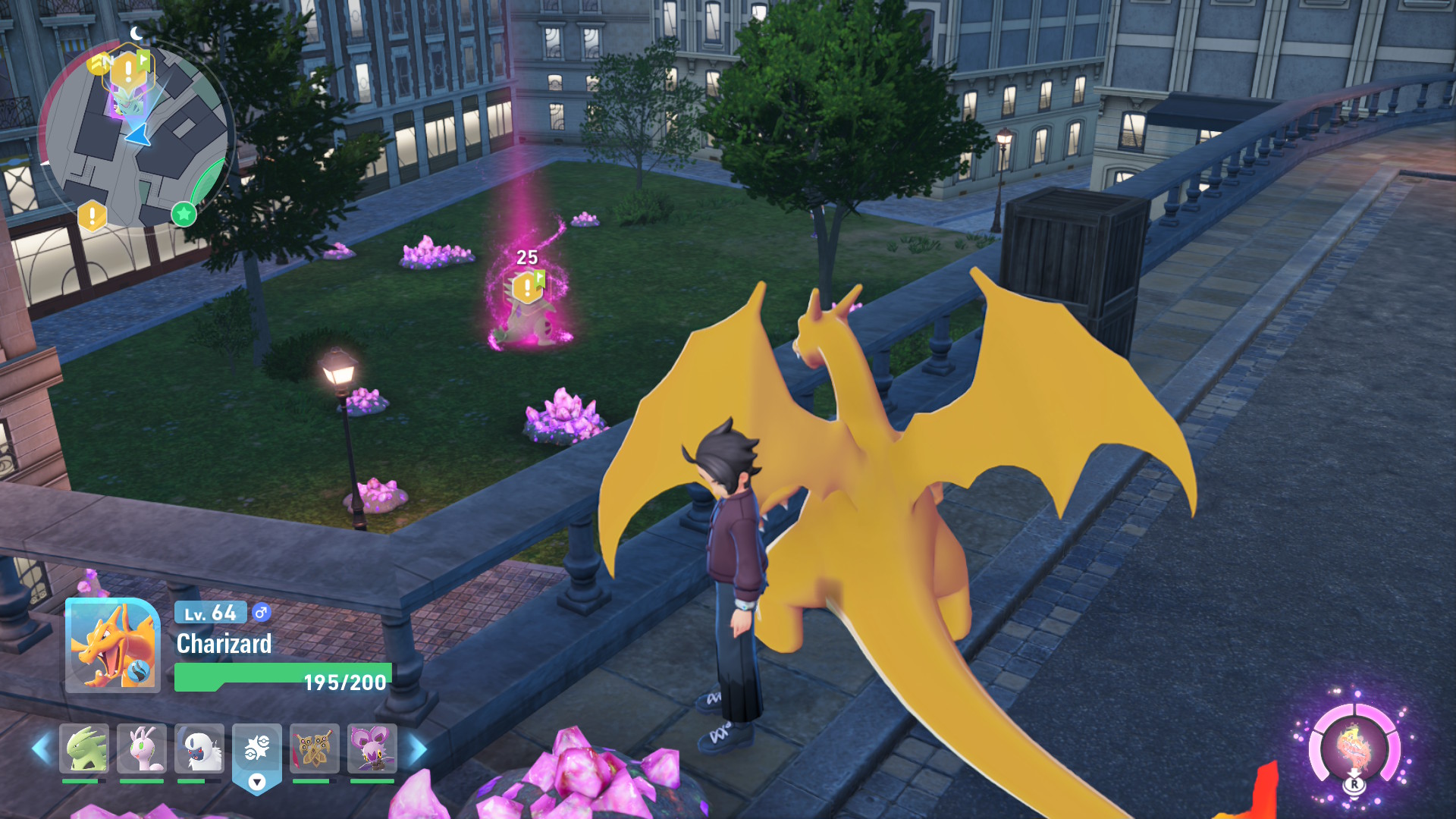
The intro was super long and tedious, even for a Pokémon game, so what’s blown my mind the most is that I’ve been enjoying myself quite a bit. The writing is still not what I’d consider adult-level, and much of the main story feels forced to fit the game’s battle/catch/mega-evolve system rather than tell an engaging narrative. But it does have a nice procedural flow to its storytelling.
There are strong jumping-off points at the end of each episode, then the next time you come back, the story sets up the next episode in the same way as last time. Each episode’s conclusion is different, and there are story moments I find boring in each one. However, the episodic nature might be one of the title’s biggest strengths. Like Stardew Valley, something about the day/night cycle breaks up the gameplay into nicely digestible chunks, which is great for playing on a portable console like the Switch. It also means there is always just one more thing to do.
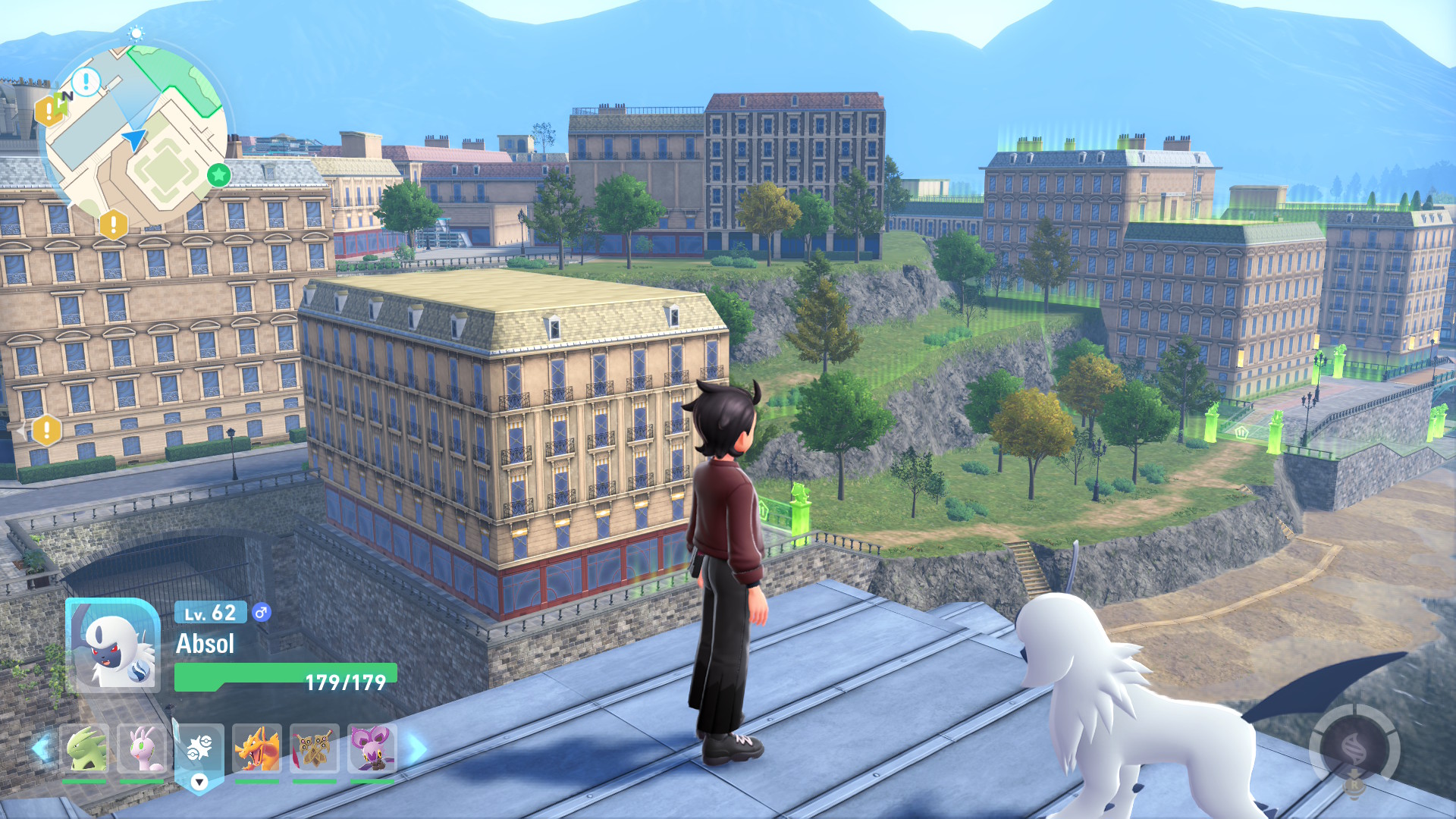
You can explore the Wild Zones, knock off bite-sized side quests, continue the main story, and at night, you can battle a lot more to level up your team easily.
Each Wild Zone is fairly small and has around six Pokémon to catch. The side quests are peppered all over the map, so you’re never that far from one. Some of these are battles, some are fetch quests, and others are more interesting. However, all are quick, so as I get bored with other parts of the narrative, I have found myself doing more of these to switch things up. I should mention here that the battles don’t scale, so as you get further into the game, the battles get a lot easier.
Then, at night, I gather points to get to my next Promotion match or work in the Wild Zones to catch Pokémon that are only available in the dark. Promotion matches are battles with tough trainers that let you move up the ranks in the Z-A Royal tournament. To partake in one of these, you need to acquire points in the nighttime battle zones. While I was excited about this new Z-A ranking system when I started the game, sadly, it’s mostly a thin facade over traditional Gyms, so don’t get your hopes up expecting anything super new.
Overall, the game’s day/night cycle keeps you shifting from missions/collecting new Pokémon to battling. This sounds like something minor, but it keeps the game flowing nicely. I’ve found myself spending days doing side missions, working to catch all the monsters in the wild areas and simply exploring the city. You can come across some interesting buildings and places, but I can’t write about them due to the review embargo. That said, if you explore, there are a few neat places and things to find, even if it means getting lost in the grey-brown labyrinth that makes up the city.
Catch’em all, one more time
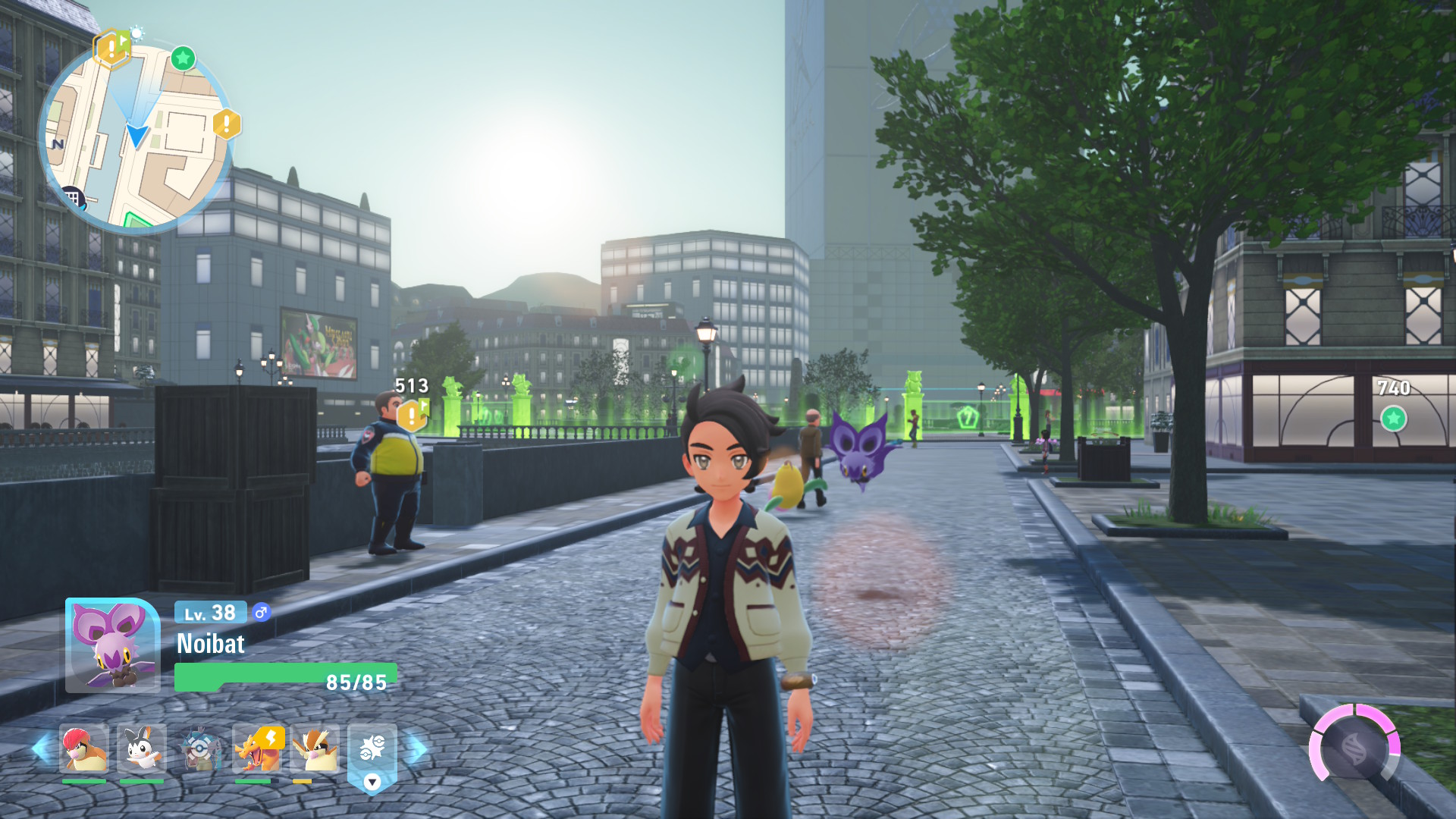
I’m a huge Pokémon fan, and there was enough new here to keep me interested throughout the main story. Even simple things, like wondering how many Wild Zones might appear by the end of the game, or what interesting city locals I might stumble into, kept me coming back for more.
Be aware that the scale keeps everything fairly small and contained here. While it can be exciting, I found myself walking away from many moments wishing there was a bit more wonder. After the first two hours, the game is pretty much out of “wow” moments. On the contrary, I was playing Ghost of Yotei before this, and every hour or so in that game, something would stop me in my tracks and make me think “holy crap.”
Pokémon fans will get a lot out of this game, and the new city setting and battle system change up the formula a lot, which helps keep things interesting. But if you’re looking for true wonder and excitement, I think we’ll all have to wait a little longer.
I played on Switch 2 and things ran pretty smoothly, but the draw distance was still shorter than I wanted, resulting in things popping in right in front of me often.
If you want to play Pokémon: Legends Z-A, it comes out on October 16 and will cost $85 on Nintendo Switch and $100 on Switch 2.
MobileSyrup may earn a commission from purchases made via our links, which helps fund the journalism we provide free on our website. These links do not influence our editorial content. Support us here.







